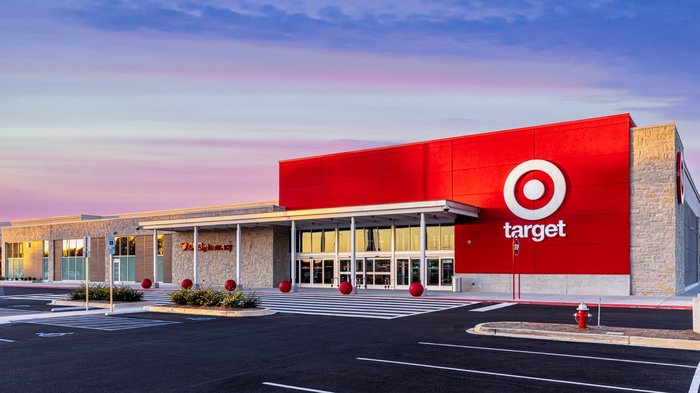New research: Search abandonment continues to vex retailers worldwide
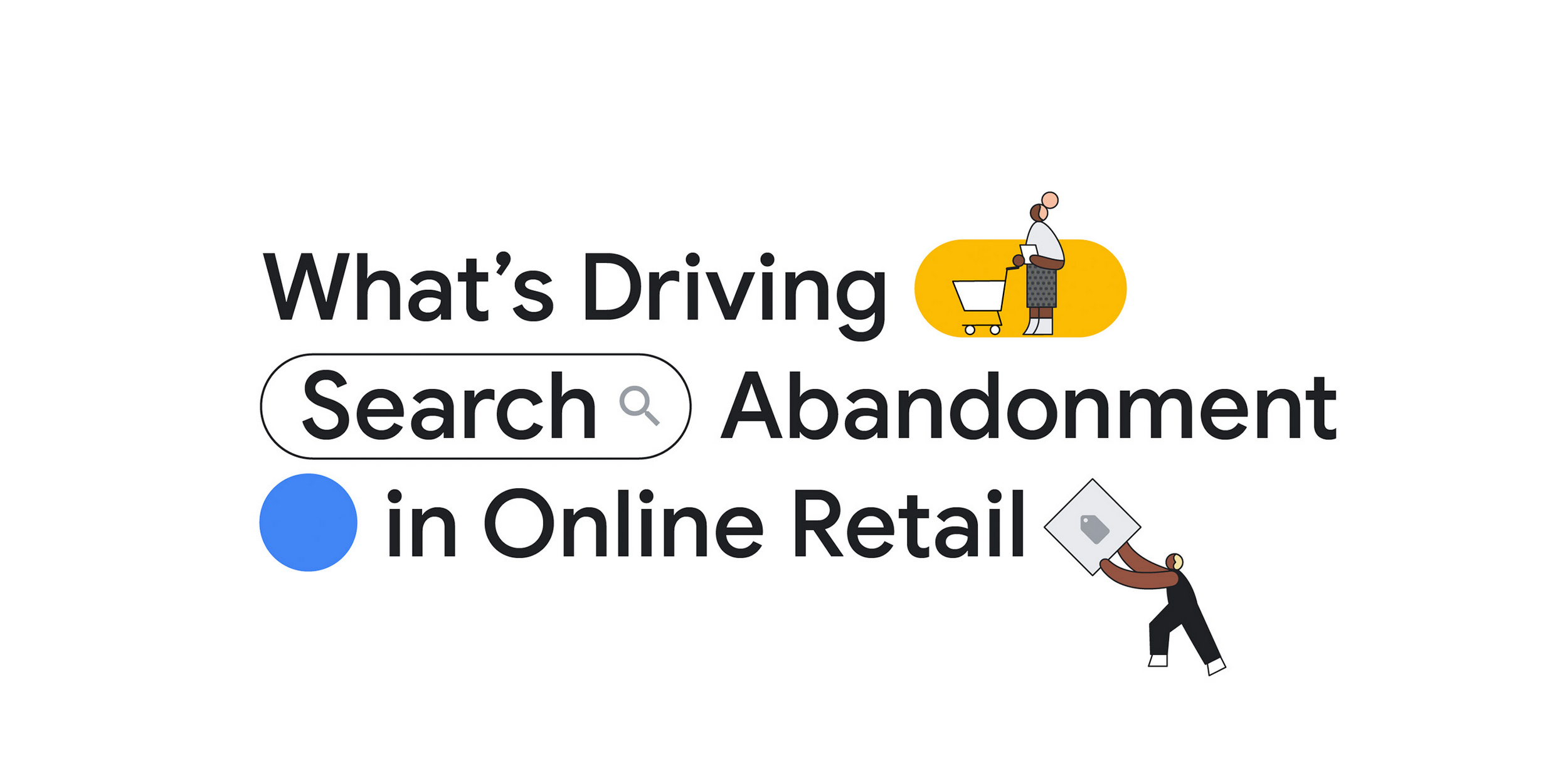
Carrie Tharp
Vice President, Strategic Industries, Google Cloud
Search abandonment—when a shopper searches for a product on a retailer’s website but doesn’t find what they are looking for—costs retailers more than $2 trillion annually globally1, and more than $234 billion in the United States alone.
Today, we’re releasing new data about the impact of search abandonment, including its role in brand loyalty and shopper sentiment as uncovered by a Google Cloud-commissioned Harris Poll survey of nearly 13,500 adults over the age of 18 in 14 countries who have visited a retail website and used the search function in the past six months.
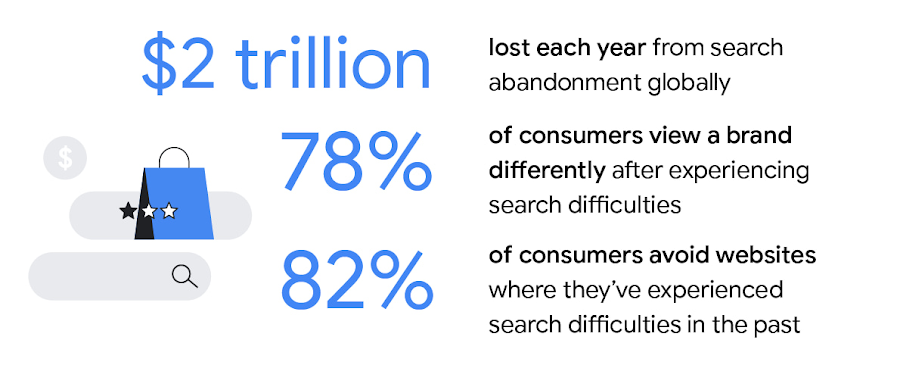

Good [and bad] search experiences have immediate impacts for retailers
Google Cloud first studied search abandonment and explored its impacts on shoppers and retailers in 2021. Our latest round of research, conducted by the The Harris Poll during the peak shopping season of 2022 (Black Friday and Cyber Monday), found that subpar search experiences on retailers’ websites remain costly, both in terms of lost sale opportunities and shopper sentiment.
When U.S. consumers have what they feel is a successful search on a retail website, the vast majority (92%) purchase the item they were searching for. More than three-quarters (78%) also purchase at least one item in addition to the one they originally searched for. On average, three additional items were purchased after a successful search.
In contrast, after an unsuccessful search using the search function or search box on a retail website, more than half (53%) of U.S. consumers say they typically abandon their carts and go elsewhere if there’s at least one item they can’t find on a website. Globally, a similar proportion agree (53%), with those consumers in India (63%) most likely to abandon their carts.
The search bar is a retailer’s most important online asset
U.S. shoppers depend on the search function or search box when shopping online—it’s the most common way they search for products on retail websites (69%), followed closely by general website browsing (63%). Unsurprisingly, nearly 9 in 10 consumers (88%) say a good search function is very important or absolutely essential when visiting a retail website.
But consistency is lacking in search experiences. Only 1 in 10 U.S. shoppers say they get exactly what they are looking for (12%) or good alternatives (11%) every time they use the search function on a retailer’s site.
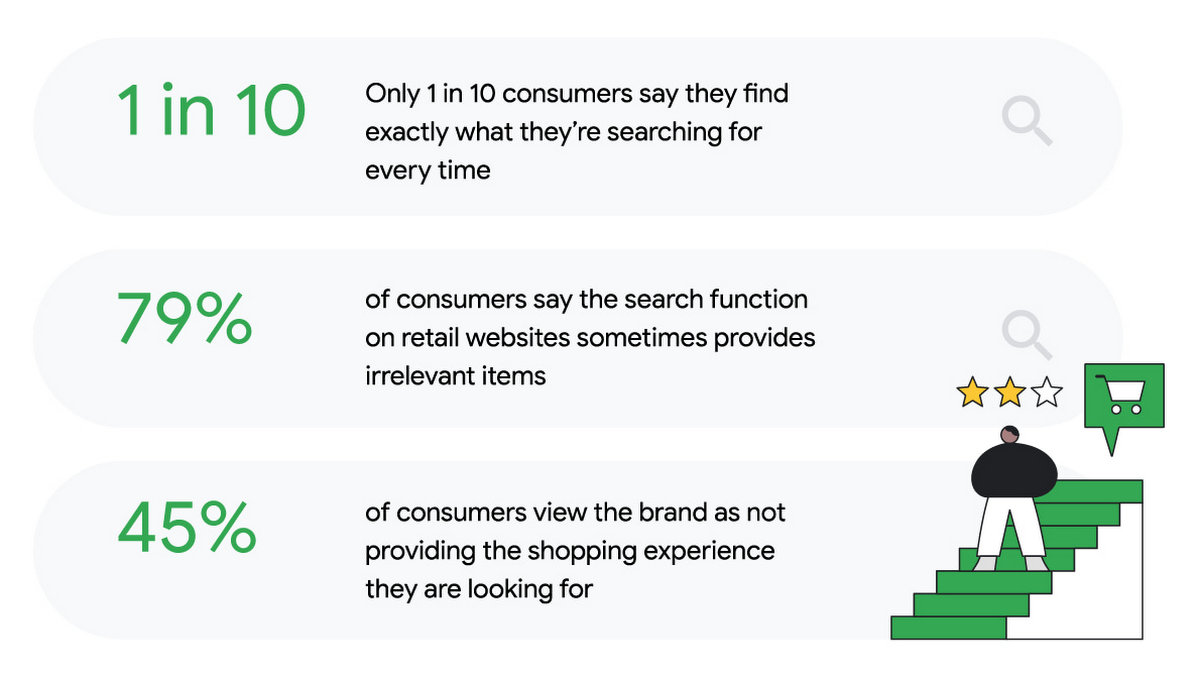

When surveyed in November - December 2022, more than three in four U.S. consumers (76%) said they have used the search function or search box on a retail website and it did not provide the item they were looking for; on average this happened four times that month. Globally, this number varies greatly. For example, shoppers in Japan experience unsuccessful searches around two times in a given month, while consumers in India experience far more unsuccessful searches on retail sites at five times per month.
Gone are the days where retailers can expect a customer to search, filter and refine repeatedly to find what they want. People around the world now expect site search engines to understand their intent deeply, return relevant results and help them discover new products easily with personalized recommendations.
For example, when a shopper searches for a “long floral dress with short sleeves and comfortable fit” on an ecommerce site, they expect to immediately get results for precisely that—rather than adjusting their search multiple times, or worse, giving up their shopping journeys. But it’s still a struggle for many retailers’ search engines to understand exactly what shoppers are looking for, especially without capabilities like understanding natural language. And failing to understand what shoppers are looking for comes at a cost.
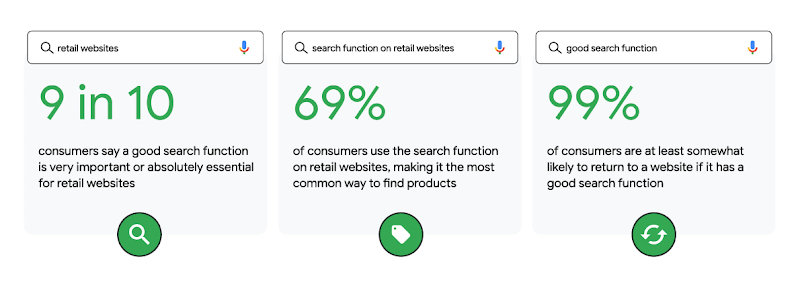

Search abandonment remains pervasive, but loyalty can be won
The majority of consumers in the United States (78%) and globally (72%) now say they are less loyal to a brand when it’s hard to find what they want on a website.
Around 8 in 10 (U.S.: 81%, global: 80%) agree that after an unsuccessful search experience on a retail website they are more likely to leave the site and purchase the item elsewhere. Around 8 in 10 (U.S.: 82%, global: 77%) say they avoid websites where they have experienced search difficulties in the past.
Fortunately for retailers, 86% of consumers say it’s possible to win back their loyalty after an unsuccessful search, most commonly by giving them a discount or promotion (46%), upgrading their website (45%), or sending an email with the correct item they searched for (36%).
Retailers can tap into Google Cloud’s AI technology to give shoppers the search and browsing experience they want. And with Google Cloud’s Discovery AI now integrated into Shopify’s Commerce Components, even more retailers worldwide can easily update their digital shopping experiences with Google-quality search capabilities.
Download our ebook to see the full survey results, and visit our website to learn more about Google Cloud’s solutions for retailers to improve customer experiences and combat search abandonment.
1. Local currencies in each country were converted to USD using conversion rates from March 16, 2023


